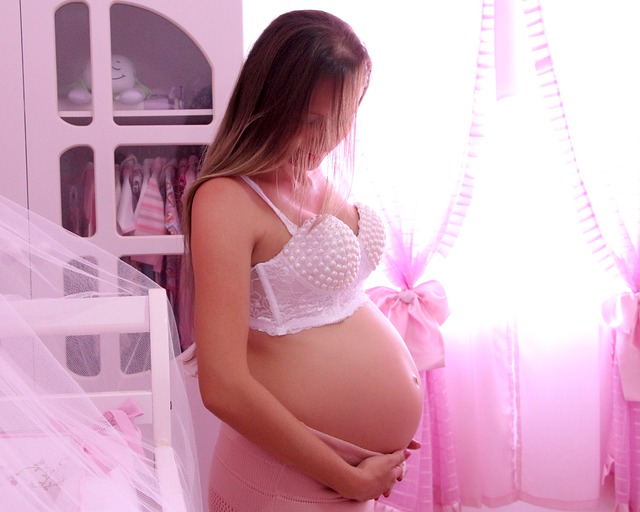Having triumphed over breast cancer, I believed I had faced my most significant health challenge. After enduring a rigorous regimen of surgeries, chemotherapy, and radiation, I felt invincible — convinced that no health battle could compare to what I had already overcome.
When I discovered I was pregnant, it felt like both a miraculous and anxiety-inducing surprise. I had just begun to enjoy the calm after my cancer storm, only for another, more joyous challenge to arise. Picture a thunderstorm that rolls in while you’re comfortably tucked in bed, where the fear has faded with time, and you drift off to sleep to the soothing sound of rain.
Pregnancy was a delightful experience for me. I had never imagined I would relish the feeling of a growing belly or that I would be able to share in the joys of impending motherhood. I was thrilled to join the community of expectant parents, enjoying the little kicks and the adorable maternity clothes. Despite a diagnosis of gestational diabetes, which was primarily genetic, I felt ready to tackle this new challenge head-on, thinking nothing could eclipse my victory over cancer.
The day of my induction finally arrived. However, complications arose when my baby’s heartbeat began to drop, leading to an unexpected C-section. Although it wasn’t part of my original birth plan, my priority was ensuring my baby’s health. As I lay in the operating room, I heard my son cry, but I grew increasingly apprehensive as the surgery stretched on without communication from the medical team. After what felt like forever, the surgeon announced the diagnosis: placenta accreta.
For those unfamiliar with this condition, it can be harrowing. Placenta accreta occurs when the placenta attaches too deeply into the uterine wall, making it difficult to detach post-delivery. This condition can lead to severe complications, including significant blood loss, the need for a hysterectomy, or even life-threatening situations. Alarmingly, this complication affects around 75% of complex childbirth cases, as reported by the American Pregnancy Association.
Fortunately, my OB managed to save my uterus during the surgery. Relieved by her expertise, I opted to return to her for my second birth, hoping for a smoother experience. During that subsequent pregnancy, I received thorough monitoring through ultrasounds and additional appointments, as the risk of recurrence is higher after an initial diagnosis. All signs indicated that I was in the clear.
However, when the day of my second C-section arrived, I sensed trouble again. Initially, I had been promised immediate skin-to-skin contact with my newborn, but that changed abruptly. I mustered the courage to ask about my placenta, and the response was disheartening: “It’s stuck again, Jessica,” my surgeon informed me.
The anxiety rushed back as I realized the severity of the situation. My surgeon worked diligently to detach the placenta, but I was left grappling with feelings of loss and frustration. I had already faced enough medical challenges and didn’t want to lose control over my body again.
Following the surgery, I was unexpectedly rushed back into the operating room due to complications. During the procedure to remove my placenta, my bladder had also become entangled, resulting in a serious laceration. This led to a prolonged surgery, leaving me with not only a diagnosis of placenta accreta but also a damaged bladder and a lengthy recovery ahead.
The implications of placenta accreta extend far beyond the immediate complications. Many women face the heartache of being unable to have more children or suffer ongoing health issues due to prior complications. Even with extensive monitoring, I remained at risk, and I realized later that attempting a vaginal birth could have resulted in fatal outcomes due to internal damage or excessive bleeding.
In the end, I was left with a catheter, a newborn, and the daunting reality of my medical condition. The uncertainty of my recovery and the potential for long-term effects was overwhelming. However, I hold hope that advancements in medical technology will lead to better detection methods for placenta accreta, enabling women to receive the care they need and deserve.
If you’ve experienced placenta accreta and are considering having more children, it’s crucial to discuss your options with your healthcare provider. They can help devise a monitoring plan to assess the likelihood of recurrence and prepare you for any potential risks. For more information about placenta accreta, you can refer to this resource from Modern Family Blog, which offers valuable insights into this condition. Additionally, if you’re exploring family planning options, consider checking out the Artificial Insemination Kit for more information. Another great resource for understanding pregnancy and intrauterine insemination can be found at NHS.
Summary:
Placenta accreta is a serious childbirth complication that can lead to life-threatening situations. It occurs when the placenta attaches too deeply to the uterine wall, complicating delivery and increasing the risk of severe bleeding, hysterectomy, or other complications. Awareness and thorough monitoring are essential for women who have experienced this condition, especially when considering future pregnancies.
